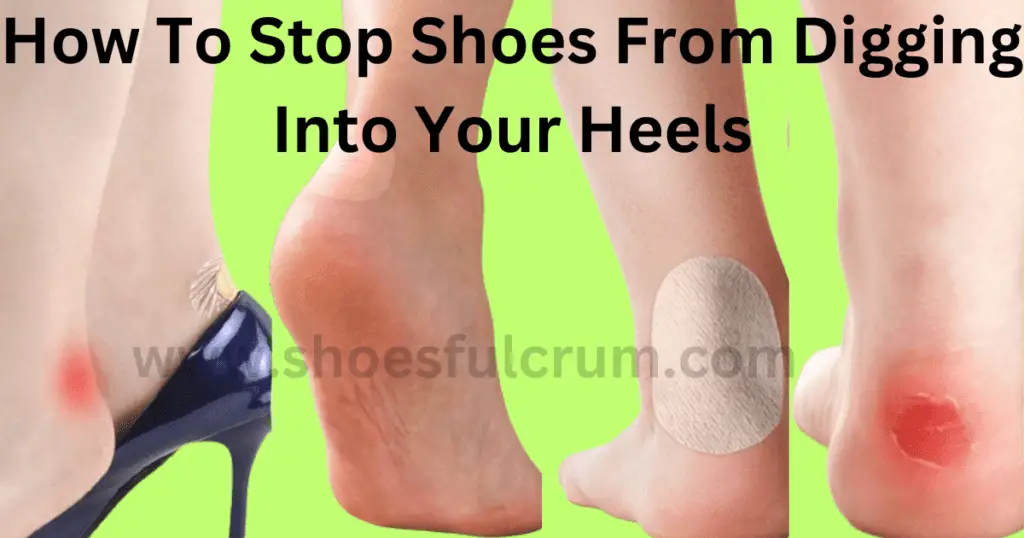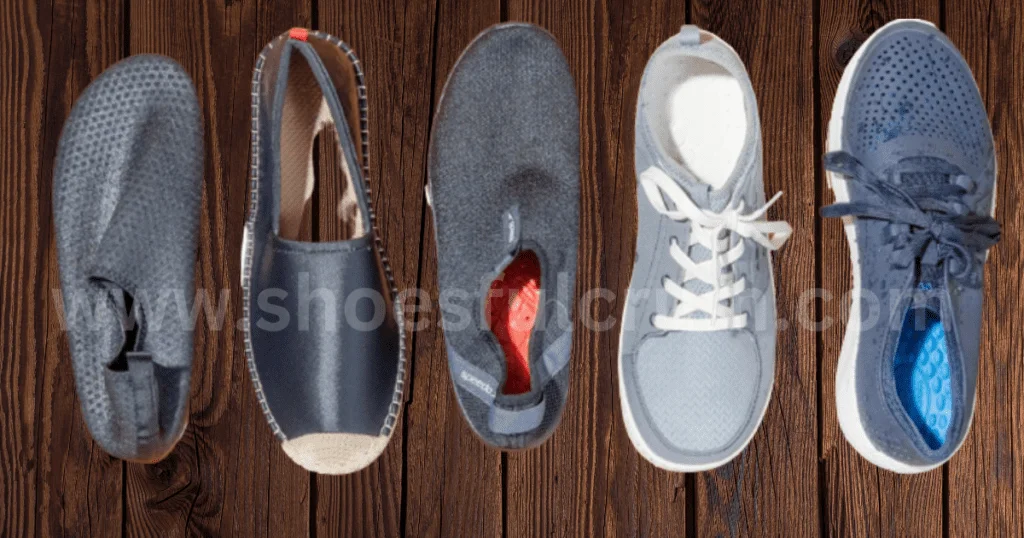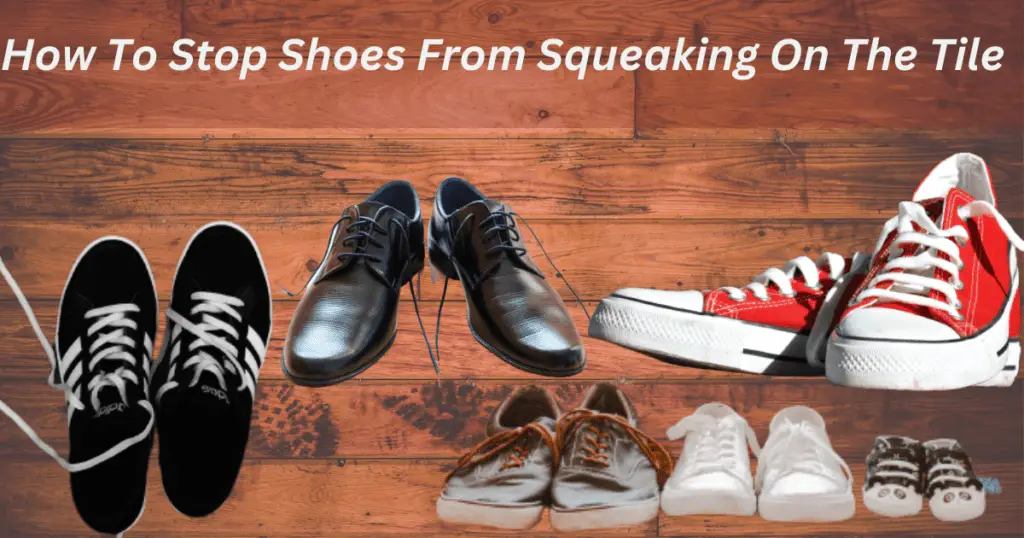Do your shoes ever dig into the backs of your heels, causing you to wiggle in pain? It’s a frequent issue that can be caused by anything from ill-fitting shoes to excessive exertion. But, regardless of the reason, the end consequence is usually the same: discomfort, blisters, and possibly injury. That is why resolving this issue is critical, both for your short-term comfort and long-term foot health.
In this article, we’ll look at a few methods and strategies for preventing shoes from digging into your heels. Whether you’re an athlete, a busy professional, or simply want more comfortable shoes, I will cover everything from the correct shoe selection to cushioning and padding to keep your feet comfy and pain-free.
So, if you’re sick of wearing unpleasant shoes, keep reading to find out more!
Understanding The Issue (How To Stop Shoes From Digging Into Heels)
If you’re experiencing discomfort from your shoes digging into your heels, I totally understand how frustrating that can be. To help alleviate this problem, it’s important to first understand why it’s happening.
Let’s look at some of the most prevalent causes of shoes digging into heels, the structure of the foot and heel, and how to tell whether your shoes are causing issues.
- To understand why shoes dig into heels, it’s useful to first grasp the structure of the foot and heel. The heel is the back of the foot, consisting of bone and soft tissue. When you apply pressure or friction to this area, it can cause discomfort, agony, and even injury.
- A bad fit is one of the most common causes of shoes digging into heels. Shoes that are too big or too small can cause friction and rub on the back of the heel, which can lead to blisters and irritation.
- Even well-fitting shoes might cause issues if they have tightness or pressure spots around the heel. This might happen as a result of a shoe design defect or as a result of foot swelling during exercise.
- The materials used to construct your shoes can also contribute to heel discomfort. Shoes made of stiff materials or with rough edges can irritate and blister the skin.
How To Avoid Shoes From Digging Into Your Heels
Tired of your shoes digging painfully into your heels? Not to worry! I have some useful methods to help you avoid this issue.
By following these methods, I am sure you can keep your shoes from digging painfully into your heels, so you can enjoy your footwear and stay comfortable all day long.
Best 16 Methods To Stop Shoes From Digging Into Your Heels
Following are the best 16 methods that you can use to stop shoes from digging into your heels.
Here are the methods:
Method 1: Choose The Correct Size
- Acquiring the correct shoe size is important for avoiding heel pain caused by ill-fitting shoes. Blisters, calluses, and even plantar fasciitis can result from wearing shoes that are too small or too large.
- To determine the correct size, I would suggest measuring your feet at the end of the day when they are at their largest. You should also take measurements of both feet because one may be somewhat larger than the other.
- To guarantee a perfect fit, try on shoes with the type of socks you intend to wear with them. Moreover, walk around in their shoes to test their comfort and fit. A thumb’s width of space should exist between your longest toe and the front of the shoe, and the shoe should not feel tight or slip off when walking.
- It’s also worth noting that sizes vary by brand and style, so it’s always a good idea to try on shoes before buying them. If you’re purchasing online, make sure to check the brand’s sizing chart and read user reviews to see if the shoes run large or small. Taking the effort to get the correct size can make a big difference in avoiding heel pain and discomfort.
Method 2: Wearing The Proper Socks
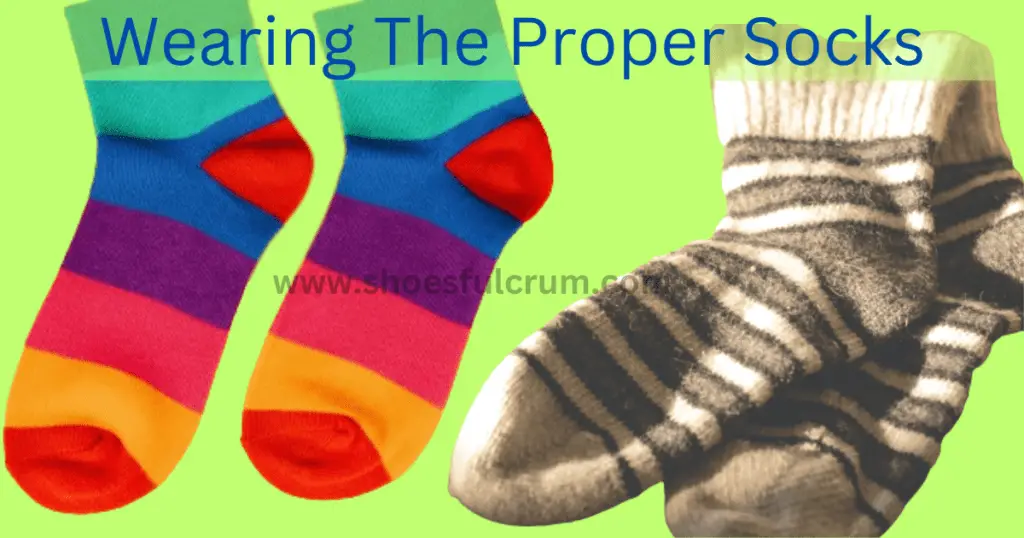
- It’s essential to wear the right socks to keep your shoes from digging into your heels. When selecting socks, take into account the material, fit, and thickness. Moisture-wicking materials, such as wool or synthetic fibers, can keep your feet dry while also reducing friction.
- Cotton socks, absorb moisture and can lead to blisters. Check that the socks fit correctly and are not too tight or too loose. Tight socks can impede blood flow and cause discomfort, while loose socks can bunch up and cause friction. The sock’s thickness should also be taken into account.
- Thinner socks are more breathable and can help keep your feet cool, while thicker socks give more cushioning and can help absorb shock.
- I would advise wearing clean socks every day to avoid the accumulation of bacteria and odor. You can prevent shoes from biting into your heels and ensure optimal comfort while on the run by wearing the correct socks.
Method 3: Use Of Plasters
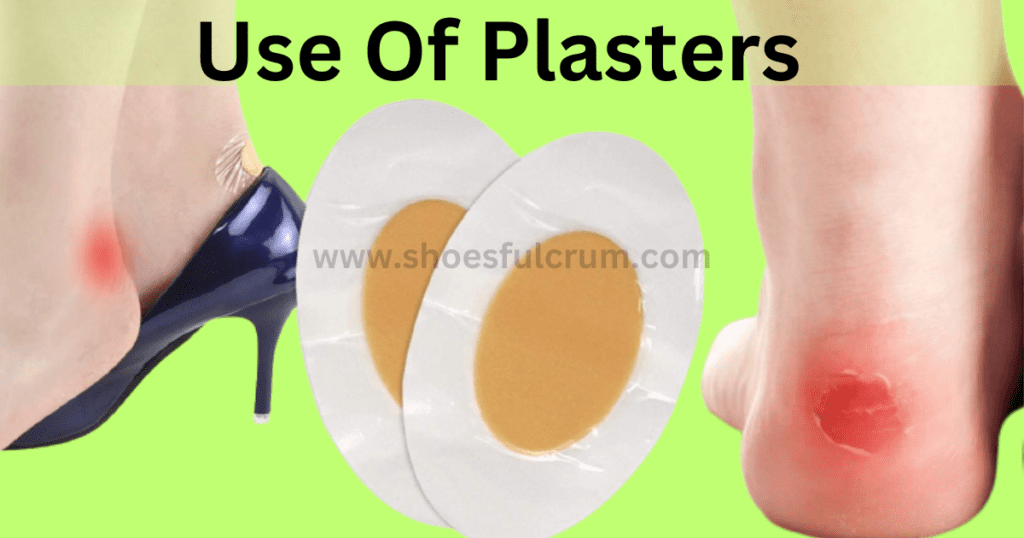
- Plasters can be used to prevent blisters from forming or to protect existing blisters. Plasters act as a barrier between the skin and the shoe, decreasing friction and irritation. While putting plasters, it is critical to select the appropriate size and form to cover the damaged area. Plasters created expressly for blisters are frequently thicker and contain a cushioned pad that helps absorb stress and pressure.
- If you need to apply a plaster, it is important to start with a clean and dry area. To do this, you must first wash the affected area with soap and water, then gently pat it dry with a clean towel.
- If you use a plaster directly over an open blister can create additional irritation. That’s why use a blister plaster with a cushioned pad instead to shield the blister from pressure and friction. Apply a sterile dressing to the blister if it has already burst to avoid infection and improve healing.
- Plasters must be changed frequently to maintain the region clean and dry. If the plaster becomes damp or begins to peel, replace it with a new one. Avoid removing the plaster too soon, since this might cause further irritation and postpone recovery. If you have any worries about the blister or it does not appear to be healing, seek assistance from a healthcare expert.
Method 4: Use Of Insoles
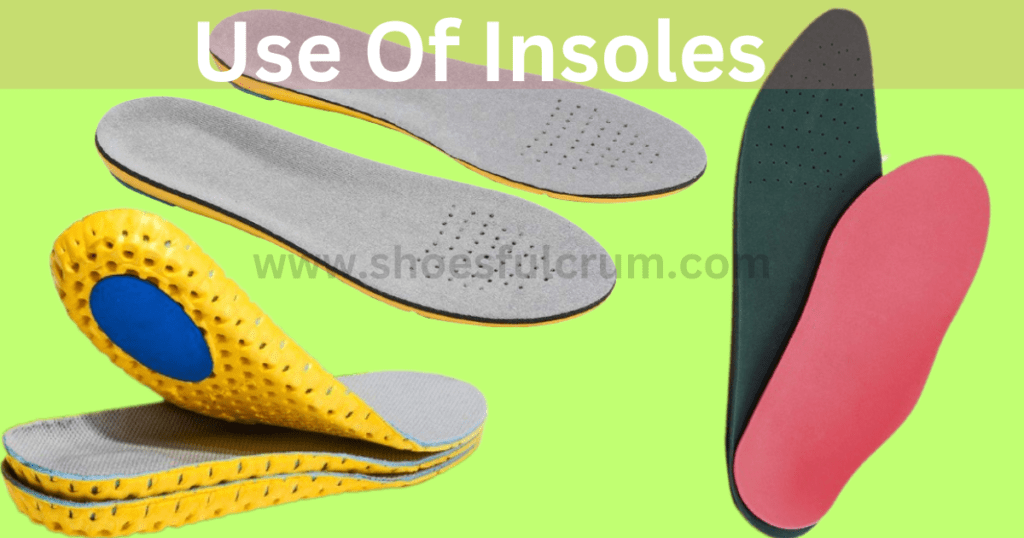
- Insoles are a great way to keep shoes from digging into your heels. These can help to add cushioning and support, making it more comfortable to wear your shoes for long periods. Insoles are often made of several materials, such as gel, foam, and cork, and are available in a variety of thicknesses and forms to fit various types of shoes.
- It is critical to choose the correct size and form of insoles for your shoe and foot. You can also look for insoles with extra characteristics like arch support or shock absorption to provide extra comfort and protection. To use insoles, just remove the previous insole from your shoe and replace it with the new insole.
- Insoles can also be personalized to fit your feet, which is very useful if you have specific foot ailments or concerns. Several podiatrists provide custom orthotics, which are insoles that are carefully built to fit your feet and solve any difficulties or discomfort you may be having.
- If you have a specific foot ailment or discomfort, it may be worth speaking with a podiatrist to determine if bespoke insoles could help ease your symptoms.
Method 5: Use Of Heel Grips Or Pads
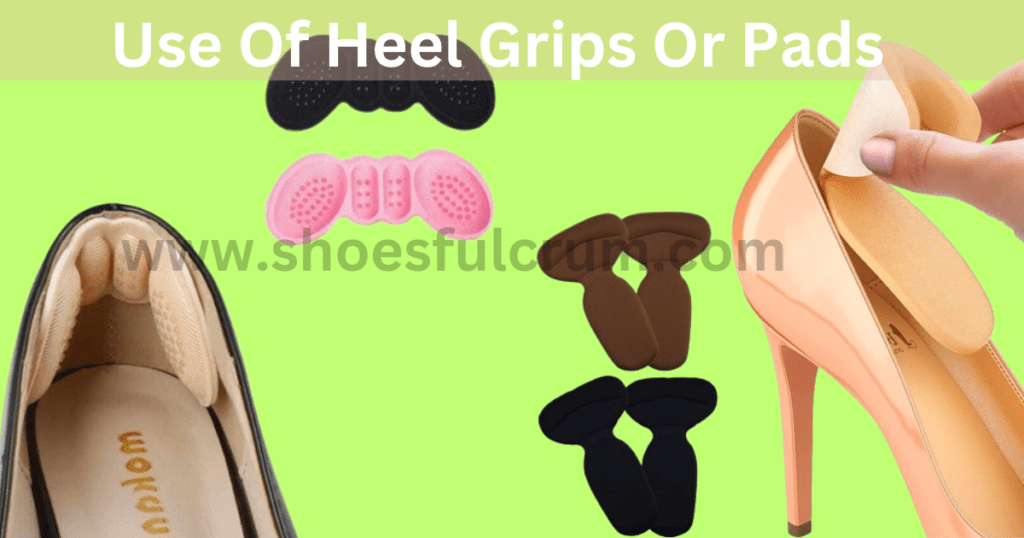
- Another method for preventing shoes from digging into your heels is to use heel grips or padding. They are intended to make shoes fit more tightly, decreasing sliding and rubbing that can lead to blisters and pain. Heel grips are often constructed of a soft, cushioning substance that sticks to the inside of your shoes, offering an extra layer of heel protection.
- When employing heel grips or pads, it’s essential to choose the correct size and form for your shoes. There are other solutions available, such as adhesive pads, silicone heel cups, and foam pads that slot into the back of your shoes. You may need to try a few various types before you locate the one that works best for you.
- Heel grips or pads are especially handy for shoes that are just a tad too big, as they fill in any surplus space and keep your feet from sliding around within the shoe. They can also be a smart choice for shoes that are especially hard or unpleasant since the additional cushioning can provide respite and support.
- Overall, I would say heel grips or cushions are an easy and efficient way to keep shoes from biting into your heels. They are inexpensive and commonly accessible, and they can make a significant difference in the comfort and fit of your shoes.
Method 6: Use Of Moleskin

- Moleskin is a soft, adhesive material used to protect the skin against blisters, sores, and other skin irritations. Moleskin can be an excellent way to keep shoes from digging into your heels.
- Before begin using moleskin, I would advise cleaning and drying the affected region of your foot. Then, cut a piece of moleskin to fit over the rubbing region of your foot. Make sure to cut the moleskin slightly larger than the affected area.
- After cutting the moleskin to the appropriate size, remove the backing and apply it directly to your skin. Assemble the moleskin to ensure that it completely covers the damaged area. If the moleskin becomes too thick or uncomfortable, consider reducing it to a thinner size.
- Moleskin is widely available in drugstores and supermarkets, and it can be an excellent and inexpensive way to keep shoes from digging into your heels. However, It is crucial to note that moleskin is not a permanent solution and must be updated regularly.
- Furthermore, moleskin should not be used on broken or infected skin, and I would not be recommended it for people who have diabetes or other foot disorders.
Method 7: Use Of Tongue Pads
- Using a tongue pad to prevent shoes from digging into your heels can be a good solution. A tongue pad is a little cushioning pad that is placed behind the tongue of your shoe to help relieve pressure on the top of your foot and move your weight forward.
- Tongue pads are commonly constructed of foam or gel and come in a variety of thicknesses to give variable degrees of cushioning. They are self-adhesive, making them simple to adhere to the inside of your shoe.
- To apply a tongue pad, wipe the inside of your shoe first to ensure the adhesive sticks properly. Remove the backing from the tongue pad’s adhesive and insert it beneath the tongue of your shoe. Place it so that it covers the part of your foot that is experiencing pressure or discomfort.
- Tongue pads can also be combined with other options, such as heel grips or insoles, to provide additional comfort and support. These are a low-cost and simple remedy for anyone who is having pain on the top of their foot or the front of their shoe.
- Tongue pads, when properly placed and cared for, can help to ease discomfort and prevent shoes from grinding into your heels.
Method 8: Use Of Vaseline
- I have personally found Vaseline as an excellent remedy for preventing your shoes from digging into your heels.
- It’s a cheap and simple solution that works by minimizing friction between your skin and the shoe.
- Simply apply a small amount of Vaseline on the back of your heels or other areas that tend to scrape against the shoe. Apply it evenly and use little enough to cover the afflicted region. This will help to reduce friction and avoid the formation of blisters.
- One of the benefits of utilizing Vaseline is that it is readily available and may be used daily. You can also reapply it throughout the day as needed, especially if you plan to do a lot of walking or standing.
- When using Vaseline, there are a few things to keep in mind. Because it can be messy, wait for it to permeate into your skin before putting on your shoes. It is also not a long-term remedy and may need to be reapplied several times throughout the day.
- Overall, I would say Vaseline is a cheap and efficient way to keep shoes from digging into your heels. It’s an excellent choice for individuals on a low budget or who don’t want to spend on more expensive things.
Method 9: Reduce Moisture
- One of the easiest methods I have experienced to prevent shoes from digging into your heels is to decrease moisture. When your feet are wet, it can cause friction and blisters, which can be extremely painful. Wearing breathable shoes and socks, using foot powder, and changing your socks regularly are all ways to prevent moisture.
- Breathable shoes help to minimize this by allowing your feet to breathe and air to circulate. This can help to keep your feet dry and sweat from accumulating inside your shoes. Natural fiber socks, such as cotton or wool, can also aid to minimize dampness by absorbing sweat and enabling it to dissipate.
- Foot powder can help absorb moisture and keep your feet dry. You can use it on your feet before putting on socks or on the inside of your shoes. Choose a powder intended for use on the feet that is free of talc, which can be dangerous if inhaled.
- Finally, changing your socks regularly can aid in the reduction of moisture and the prevention of blisters.
Method 10: Use Kinesiology Tape
- Kinesiology tape is an elastic, sticky tape used to treat muscle and joint injuries and pain. It’s also useful for keeping shoes from digging into your heels. To begin using kinesiology tape, ensure that the area around your heels is clean and dry. Then, cut a length of tape long enough to wrap around your heel and up the back of your shoe.
- To prevent the tape from pulling off, round the edges. One end of the tape should be placed on the inside of your shoe, directly above the heel. Finally, wrap the tape around your heel, pressing it firmly against your skin. Continue stretching and smoothing the tape up the back of your shoe.
- Kinesiology tape is flexible and allows for natural mobility while still supporting and cushioning your heels. It also helps in the reduction of friction and rubbing, which can result in blisters and pain.
- One advantage of utilizing kinesiology tape is that it is simple to adjust and remove as needed. If the tape starts to peel or feels unpleasant, simply peel it off and replace it. It can also be used in other ways, such as heel grips or insoles, to provide additional comfort and support.
- Overall, I would say kinesiology tape is an easy and efficient way to keep shoes from biting into your heels. It acts as a soft, flexible barrier between your skin and your shoes, decreasing friction and irritation.
Method 11: Use Anti-Blister Heel Balm
- Anti-blister heel balm is a treatment that helps to avoid friction between your skin and your shoes, which can lead to the formation of blisters on your heels. The balm contains several substances that are intended to soothe and nourish the skin, including shea butter, beeswax, and jojoba oil.
- Simply apply a tiny amount of the anti-blister heel balm on your heels before putting on your shoes. The balm will provide a protective barrier between your skin and the shoe, reducing friction and preventing blisters from forming.
- One advantage of applying an anti-blister heel balm is that it is non-invasive and non-slip. Unlike bandages or tape, the balm will not fall off over the day or create a slippery surface inside your shoe. It will also not leave a sticky residue on your skin or harm your shoes.
- Another benefit of anti-blister heel balm is that it can be used to prevent blisters even if you don’t currently have any. Using the balm before putting on your shoes can assist to lessen the risk of blisters developing in the first place.
- Anti-blister heel balm helps soothe and hydrate dry, cracked, or calloused skin on your heels in addition to avoiding blisters. Frequent application of the balm can assist to keep your skin soft and supple, lowering your chances of developing blisters.
- Overall, utilizing an anti-blister heel balm is a simple and effective technique to keep your feet comfy all day.
Method 12: Use Duct Tape
- Another do-it-yourself approach for preventing shoes from digging into your heels is to use duct tape. Duct tape is a strong adhesive tape that can be used for a variety of purposes, including reducing shoe blisters.
- Make sure your feet are clean and dry before applying the duct tape.
- Cut a piece of duct tape long enough to cover the damaged part of your heel.
- Place the duct tape carefully over the part of your heel where the shoe is digging in. Smooth down any creases or air bubbles to ensure the tape clings to your skin nicely.
- Depending on the activity, the tape may come off or lose its stickiness. If this occurs, remove the tape and replace it with a new piece.
- Duct tape is an inexpensive way to avoid blisters caused by shoes. It’s especially beneficial if you’re on the run and need something quick.
- However, it is crucial to note that duct tape can be irritating to sensitive skin and may trigger an allergic reaction. I would say if you feel any discomfort or irritation, remove the tape and try another method.
Method 13: Use A Blow Dryer
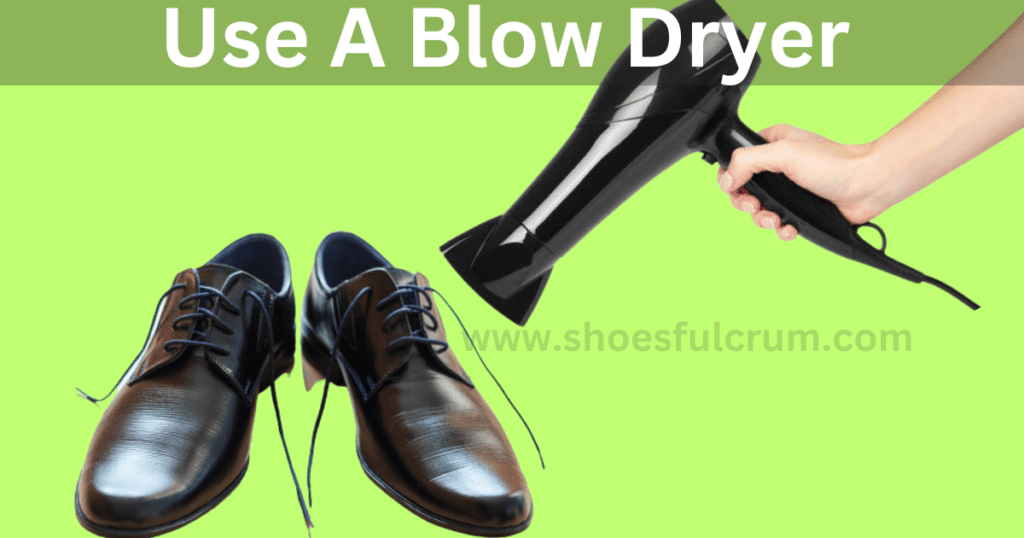
- Using a blow dryer to stretch the back of your shoes and prevent them from pressing into your heels is an efficient method. It works by warming up the material of the shoes, making them more malleable and simpler to form on your foot.
- To stretch your shoes, first put on a pair of thick socks. Then, put on the shoes you wish to stretch and point the blow dryer at the back of the shoes, where they dig into your heels. Keep the blow dryer about 6 inches away from the shoes and move it around to evenly heat the area.
- Wiggle your toes and flex your feet as the shoes warm up to help shape them to your feet. Leave the shoes on until they cool down to help them keep their new shape. Once the shoes have cooled, try them on without socks to determine if they fit comfortably. If they are still too tight, repeat the blow-drying process until they reach the necessary level of stretch.
- While using a blow dryer to stretch shoes, it is important to be patient because hurrying the process can damage the material and ruin the shoes. Begin with short heating and cooling intervals and gradually increase the time as needed. This procedure works very well on leather shoes, but it can also be used on other materials.
- Using a blow dryer to stretch your shoes will help break them in and make them more comfortable overall, in addition to avoiding shoes from biting into your heels. It is a simple and low-cost remedy that can prevent severe blisters and discomfort.
Method 14: Use Cotton Wool
- Cotton wool is a simple home item that can be used to protect your heels from shoe digging. This method is especially effective if your shoes are too wide and your heels keep slipping, causing blisters.
- To use cotton wool, gather a small amount and roll it into a ball. Finally, insert the cotton wool ball into the rear of your shoe, precisely where your heel sits. Make sure it’s snug against your heel so it doesn’t shift around when you walk.
- Cotton wool fills the space between your heel and the back of your shoe, reducing friction and preventing blisters from forming. The silky texture of the cotton wool can also give padding, making your shoes more comfortable to wear.
- It’s crucial to note that, while cotton wool can help prevent blisters, it’s not a long-term cure. If your shoes are constantly rubbing against your heels, it could be an indication that they don’t fit properly, and you should consider obtaining a different size or model of shoe.
Method 15: Stretch The Back Of Your Shoes
- When your shoes dig into your heels, it may be a painful and uncomfortable experience. Stretching the back of your shoes is one technique to avoid this. This can help to relieve any pressure or friction that is causing pain.
- There are several methods for stretching the back of your shoes.
- One of the simplest methods is to utilize ice. Simply slip a small plastic bag filled with water inside your shoe, pressing it towards the back.
- To avoid overstretching your shoes, make sure the water bag is not too large. Place your shoes in the freezer for a few hours, and then remove them from the freezer and allow the ice to melt before removing the bag. This causes the material to expand, which helps in stretching the back of the shoes. If required, repeat the procedure.
- A shoe stretching tool, which can be obtained at many shoe stores or online, is another option for stretching the back of your shoes. These tools are intended to gently stretch the shoe material to offer a more comfortable fit.
- Finally, you can extend your shoes with cotton balls or a thick pair of socks. Place the balls or socks in the back of your shoes and leave them there for a few hours or overnight. This can assist to stretch the fabric and make it more pleasant to wear.
Method 16: Use Anti-Friction Sticks
- Anti-friction sticks are a popular way to keep your shoes from digging into your heels. These sticks are intended to reduce friction between your skin and the inside of your shoes, so reducing the risk of blisters and other painful foot ailments. Anti-friction sticks are normally formed of a wax-like substance that is applied to the skin or the inside of the shoe.
- Simply apply a thin layer to the afflicted part of your foot or the inside of your shoe to use an anti-friction stick. The stick will act as a barrier between your skin and the shoe, decreasing friction and the formation of blisters. Anti-friction sticks also last a long time, so you won’t have to reapply them as regularly.
- One advantage of utilizing an anti-friction stick is that it is simple to use and can be brought with you wherever you go. Because they are often manufactured with natural components, they are also an excellent alternative for persons with sensitive skin or allergies to specific elements.
- Anti-friction sticks are available in a variety of sizes and forms, so you may select one that meets your requirements. Some sticks are intended to be used on the feet only, while others can be used on any part of the body that is prone to friction. Anti-friction sticks can be purchased online or at your local drugstore or sporting goods store.
If you have wet shoes and want to dry them within 10 minutes then read this”How To Dry Shoes Fast ( 8 Methods )-2023“
Some Useful Tips
- Change your shoes regularly to avoid wearing the same pair too frequently.
- Socks should be worn with your shoes to reduce friction and avoid blisters.
- To avoid dry, cracked skin on your feet, keep them moisturized.
- Take breaks if you’re going to be on your feet for an extended period.
Conclusion
I hope now you have got your answer about “ How To Stop Shoes From Digging Into Your Heels”.
Finally, taking proactive measures to keep shoes from digging into your heels can make a major impact on your foot health and general comfort. I encourage readers to experiment with the numerous techniques and remedies discussed in this article to find a solution that works for them.
With these precautions in place, you can walk freely without having to worry about shoe pain.
FAQ’s
What causes my shoes to dig into my heels?
Shoes digging into heels can be caused by several factors, including poor fit, tightness or pressure points, and the materials utilized in the shoes. It can also be caused by wearing the incorrect shoe size.
May I wear my beloved shoes even though they dig into my heels?
Certainly, with the use of heel grips or pads, moleskin, or tongue pads, you may be able to wear your favorite shoes. To keep the shoes from digging into your heels, try extending them or applying duct tape.
When should I get medical attention for foot or heel pain?
See a doctor or podiatrist if you have persistent or severe foot or heel discomfort. Swelling, redness, numbness, and difficulty walking are other symptoms of a significant foot or heel condition.
Can shoes that dig into my heels be avoided if I have flat feet or high arches?
You may still avoid shoes pressing into your heels by wearing shoes with adequate arch support and cushioning. Shoe inserts, such as orthotics or arch support insoles, may also help to evenly distribute pressure on your feet and prevent friction on your heels.
Can I wear heels if I’m trying to avoid shoes digging into my heels?
You may still wear heels, but you must choose the right type and make sure they fit properly. Choose heels with a larger heel base and strong arch support. You may also benefit from utilizing heel inserts or pads to alleviate friction and pressure on your heels.

About Author:
Hammad Qadir is a passionate fashion blogger with a passion for shoes, spanning over seven years. As the driving force behind “ShoesFulcrum.com” he offers unparalleled insights into iconic brands like Crocs, Hey Dude, and Birkenstock. With a collection of a hundred pairs, his expertise extends to industry giants like Nike and Adidas. Through insightful reviews and recommendations, Hammad guides readers to their perfect pair. Hammad’s knack for differentiating between brands and guiding readers makes him a trusted authority. Active on Quora, Reddit, Medium, LinkedIn, and Pinterest, he fosters engagement and shares exclusive content. Read more...

